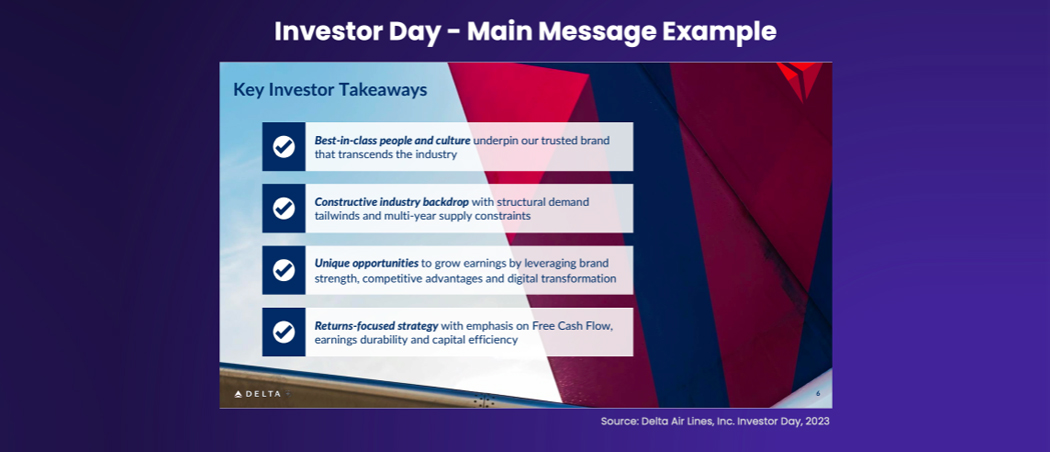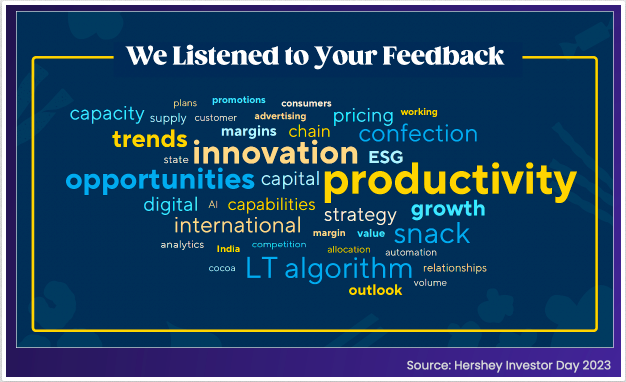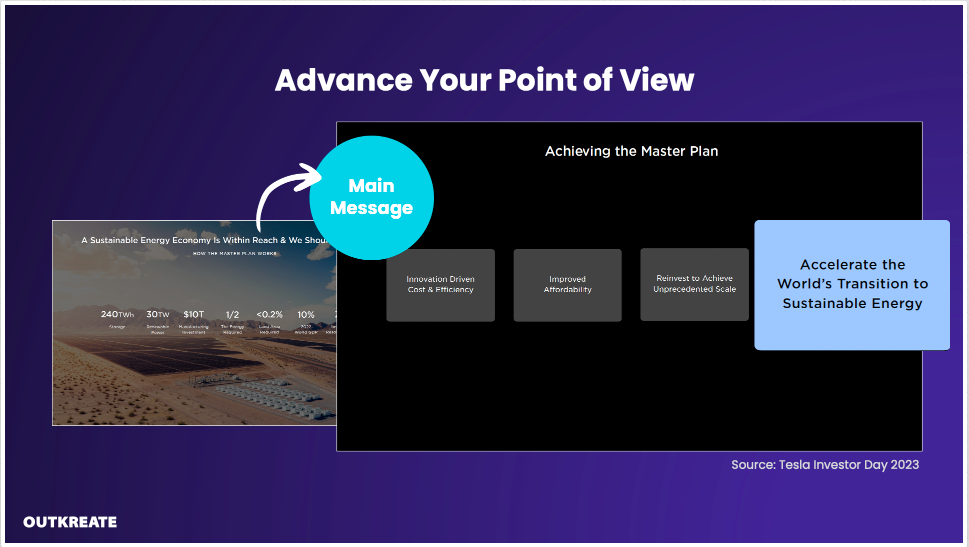Are you gearing up for your company’s upcoming Investor Day? As an Investor Relations Officer, the success of your I-Day relies heavily on a compelling main message that you want your analyst audience to walk away with.
Consider these 3 steps when creating your main message.
01
Be clear on your “Why?”
As you craft your main message, it’s crucial to clearly define the purpose and value of your investor day. Why are you hosting this event? Are you introducing a new CEO or CFO? Announcing a change in strategy? Providing updates on your company’s transformation? Pinpointing the “why” behind your I-day sets the foundation for your main message. Aligning on the “why” with your C-suite upfront will also give you cover to pushback on less relevant ideas or topics as you further facilitate content / slides development.
02
Address perception gaps
Above – take a look at how this IRO addressed perception gaps head-on within their main message. While this practice isn’t a secret, it’s worth noting common pitfalls:
The Confidence Trap: At times, IROs are so confident about what their audience wants to hear that they skip the key step of conducting a perception study.
Lost in the Shuffle: Alternatively, they might have done the study, but the crucial gaps uncovered fail to find their place in the narrative or get drowned out amid the louder voices of C-suite execs.
A Clever Shortcut: Consider this handy tactic: Create a list of perception gaps or topics that require addressing. Now, picture these gap topics in the spotlight.
Here’s an illustrative example
In this instance, the CEO initiated the presentation with this list of “gap topics”, transforming it into a rallying point. This approach compelled all leaders to align their messages with these gaps. The icing on the cake? By acknowledging these gaps to your analysts, you make them feel “heard.” This is the cornerstone of building genuine buy-in during an I-day. Remember, they’re not attending your event for a one-sided monologue. They’re seeking a meaningful exchange of information.
03
Advance your point of view
Addressing perception gaps is akin to being reactive or playing defense, i.e., you’re giving analysts what they want to hear. Next, it’s only fair that you go on the offense, and make your leadership’s voice heard. Incorporate your “offense” items into your main message, and by virtue, throughout your I-day.
Take Tesla as an example above. Their analysts aren’t necessarily asking Tesla to “advance the world’s transition to sustainable energy”. But, they have effectively integrated this unique point of view as part of their investor story. This POV sets Tesla apart, helps them continue to grow their addressable market, and makes Tesla’s cause bigger than themselves.
Whether it’s a bold mission statement, a revolutionary approach, or an innovative strategy, showcasing your distinct viewpoint will show your business savvy, and get your audience excited about your investor thesis.
04
Keep your main thing the main thing
Apply these 3 steps and your business insights to craft a strong initial ‘main message.’ As you build out each of the I-Day sections (CEO’s, CFO’s, etc.), ensure alignment with your main message, and vice versa. Keep iterating until you achieve a unified narrative. Best of luck!
P.S. Need help with your Investor Day or upgrading your Earnings Presentation? Send us an email on [email protected] and we’ll share practical ideas to help you meet your Investor goals.




